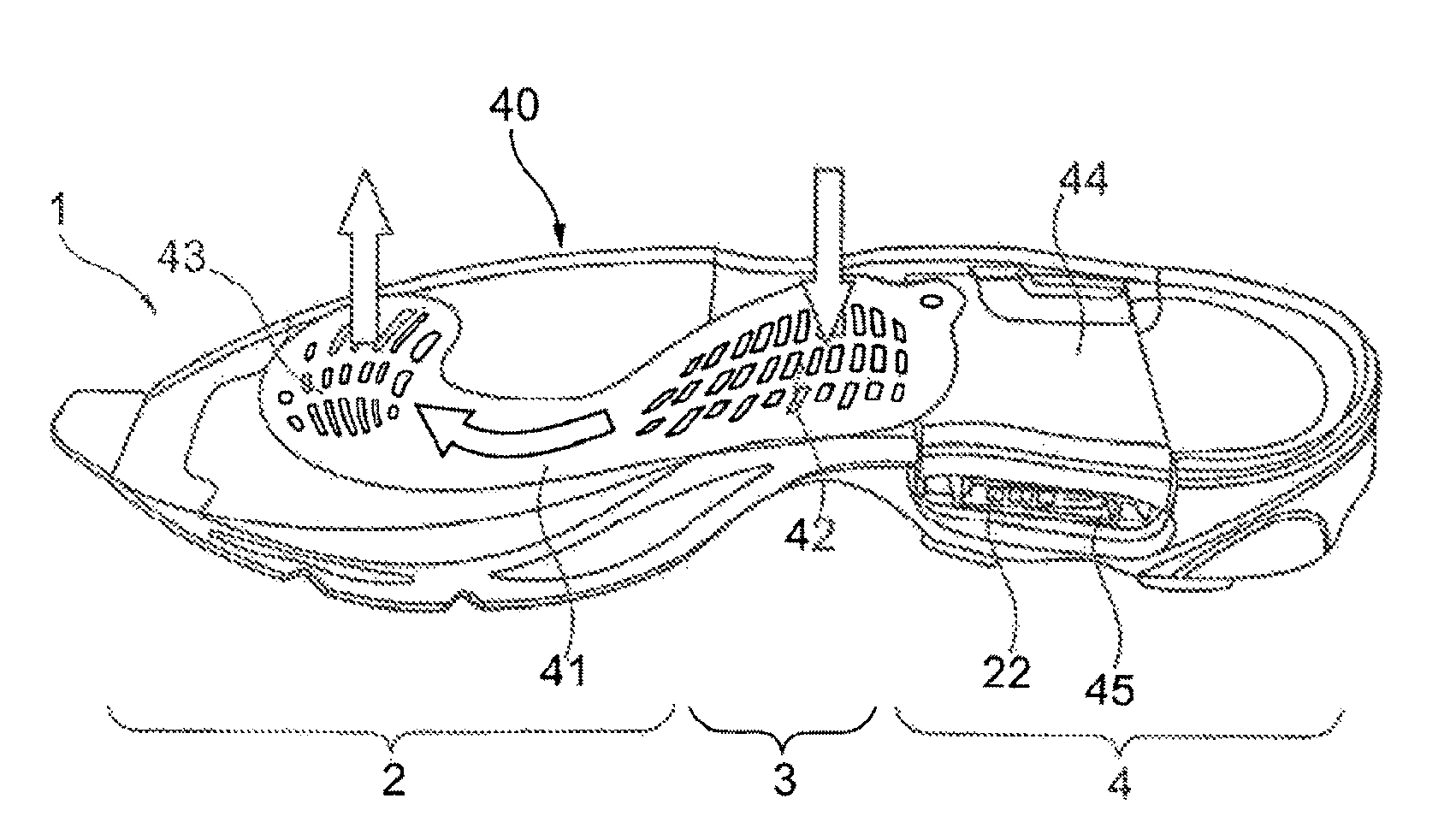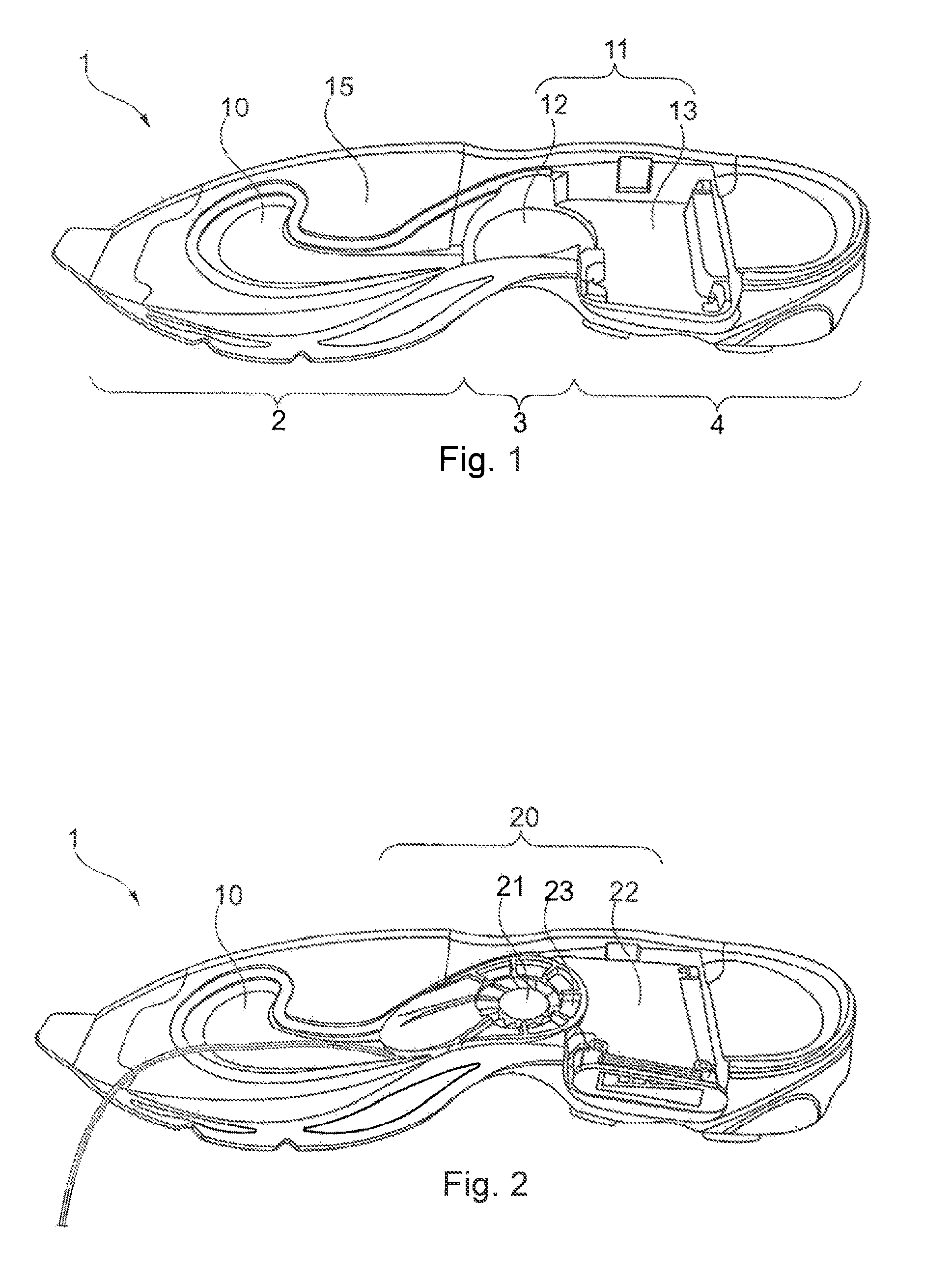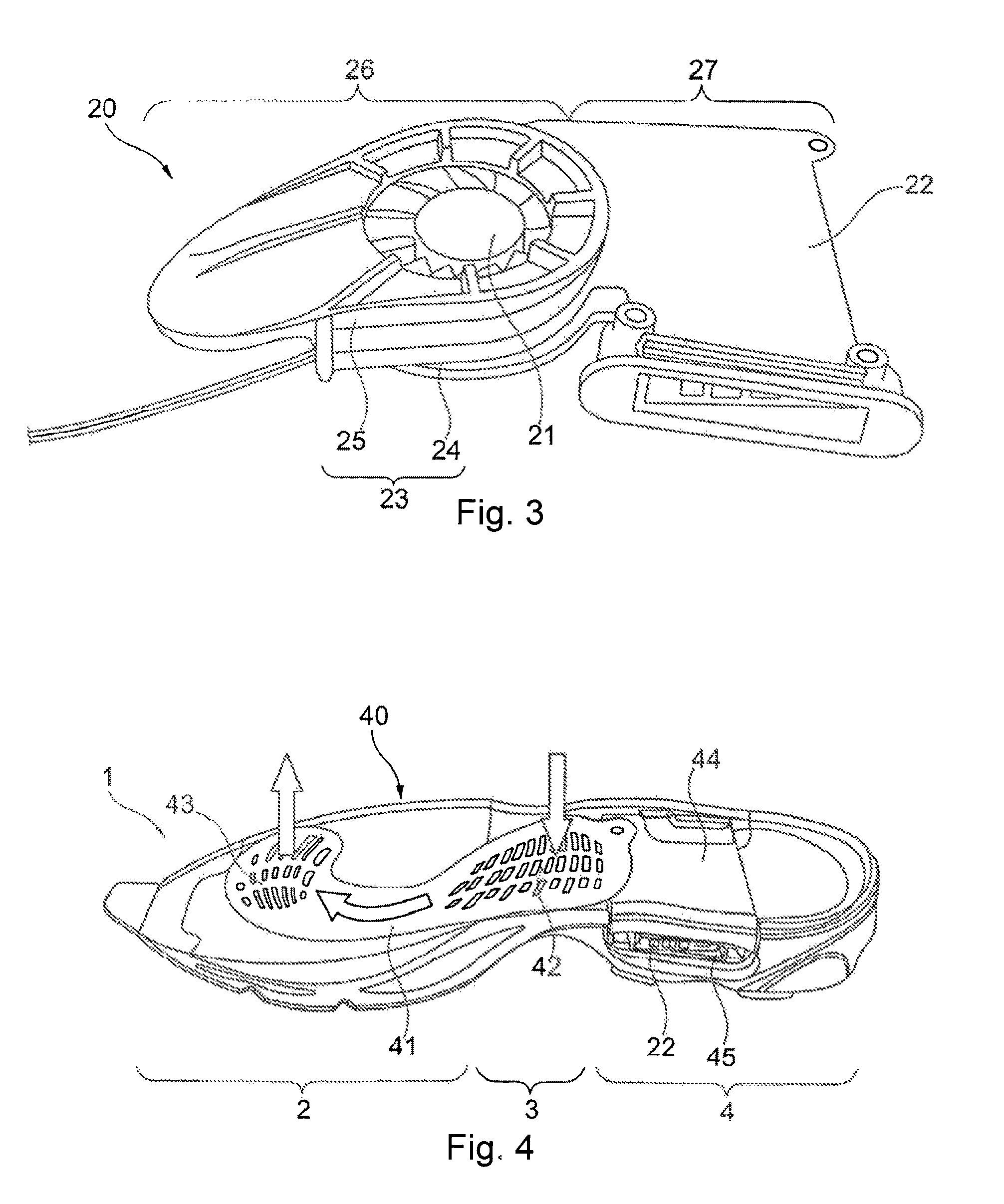Actively ventilated shoe
a technology of active ventilation and shoes, applied in the field of shoes, can solve the problems of preventing the heat and humidity from being sufficiently transported away from the foot to efficiently, the risk of foot diseases, and the inability to manufacture shoes, and achieve the effect of less customization of the clima
- Summary
- Abstract
- Description
- Claims
- Application Information
AI Technical Summary
Benefits of technology
Problems solved by technology
Method used
Image
Examples
Embodiment Construction
[0048]The present invention is now described with references to the Figures. As follows, embodiments of the present invention of a running shoe are described in more detail. While specific configurations and arrangements can be used without departing from the spirit and scope of the invention, it will be apparent to a person skilled in the relevant art that this invention can also be employed in other applications. The following examples are illustrative, but not limiting, of the structure and methods of the present invention. Other suitable modifications and adaptations of the variety of conditions and parameters normally encountered in the field, and which would be apparent to those skilled in the art, are within the spirit and scope of the invention.
[0049]It will be appreciated that the present invention is not limited to running shoes or sports shoes. Rather, embodiments of the present invention may be used in any suitable article of footwear, including, but not limited to, shoe...
PUM
 Login to View More
Login to View More Abstract
Description
Claims
Application Information
 Login to View More
Login to View More - R&D
- Intellectual Property
- Life Sciences
- Materials
- Tech Scout
- Unparalleled Data Quality
- Higher Quality Content
- 60% Fewer Hallucinations
Browse by: Latest US Patents, China's latest patents, Technical Efficacy Thesaurus, Application Domain, Technology Topic, Popular Technical Reports.
© 2025 PatSnap. All rights reserved.Legal|Privacy policy|Modern Slavery Act Transparency Statement|Sitemap|About US| Contact US: help@patsnap.com



